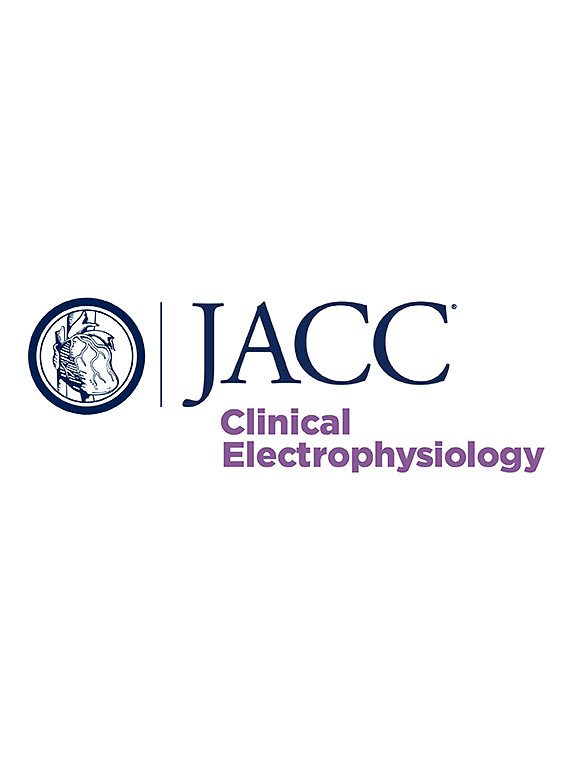聚氯乙烯-运动双胁迫挑战揭示聚氯乙烯诱发心肌病的交感-副交感神经功能障碍的功能-分子机制
IF 8
1区 医学
Q1 CARDIAC & CARDIOVASCULAR SYSTEMS
引用次数: 0
摘要
背景:自主神经功能障碍在室性早搏诱发心肌病(PVC-CM)中的意义尚不清楚:自主神经功能障碍在室性早搏诱发心肌病(PVC-CM)中的意义尚不清楚:作者利用一种结合了运动和室性早搏(PVCs)的新型 "双重应激 "挑战,描述了PVC-CM动物模型中心脏自主神经(心脏自主神经系统)重塑的功能和分子机制:方法:我们在 15 只犬(8 只实验犬,7 只假犬)中植入了心脏起搏器和神经遥测装置,并让动物接受了 12 周的大椎穴 PVC,以诱导 PVC-CM。交感神经活动(SNA)、迷走神经活动(VNA)和心率在有PVC和无PVC的跑步机运动挑战之前、期间和之后、基线和PVC-CM发展之后被连续记录。用 Western 印迹和酶联免疫吸附试验评估神经重塑的分子标记物:结果:运动会引发 SNA 和 VNA 的增加,随后 VNA 会在后期消失。当出现 PVC 时,运动诱导的 SNA 增高程度被放大,而晚期 VNA 撤回则变得迟钝。PVC-CM发生后,SNA在静息时增加,但在运动时却不能充分增强,尤其是在发生PVC时,同时运动后VNA和心率恢复受损。在重塑的心脏自主神经系统中,存在广泛的交感神经过度支配和经心肌去甲肾上腺素水平升高,但副交感神经支配没有改变,这表明交感神经负荷过重。然而,心脏神经生长因子却自相矛盾地下调了,这表明对PVC触发的交感超负荷有一种抗神经营养的反适应反应:结论:PVC-CM中的交感神经超负荷、交感神经功能障碍和副交感神经功能障碍在运动和PVC联合挑战中被揭示出来。心脏神经营养因子的减少可能是导致这种功能障碍的机制之一。恢复自律神经功能的神经调节疗法可能是治疗PVC-CM的一种新方法。本文章由计算机程序翻译,如有差异,请以英文原文为准。
Functional-Molecular Mechanisms of Sympathetic-Parasympathetic Dysfunction in PVC-Induced Cardiomyopathy Revealed by Dual Stressor PVC-Exercise Challenge
Background
The significance of autonomic dysfunction in premature ventricular contraction–induced cardiomyopathy (PVC-CM) remain unknown.
Objectives
Utilizing a novel “dual stressor” provocative challenge combining exercise with premature ventricular contraction (PVCs), the authors characterized the functional and molecular mechanisms of cardiac autonomic (cardiac autonomic nervous system) remodeling in a PVC-CM animal model.
Methods
In 15 canines (8 experimental, 7 sham), we implanted pacemakers and neurotelemetry devices and subjected animals to 12 weeks of bigeminal PVCs to induce PVC-CM. Sympathetic nerve activity (SNA), vagal nerve activity (VNA), and heart rate were continuously recorded before, during, and after treadmill exercise challenge with and without PVCs, at baseline and after development of PVC-CM. Western blot and enzyme-linked immunosorbent assay were used to evaluate molecular markers of neural remodeling.
Results
Exercise triggered an increase in both SNA and VNA followed by late VNA withdrawal. With PVCs, the degree of exercise-induced SNA augmentation was magnified, whereas late VNA withdrawal became blunted. After PVC-CM development, SNA was increased at rest but failed to adequately augment during exercise, especially with PVCs, coupled with impaired VNA and heart rate recovery after exercise. In the remodeled cardiac autonomic nervous system, there was widespread sympathetic hyperinnervation and elevated transcardiac norepinephrine levels but unchanged parasympathetic innervation, indicating sympathetic overload. However, cardiac nerve growth factor was paradoxically downregulated, suggesting an antineurotrophic counteradaptive response to PVC-triggered sympathetic overload.
Conclusions
Sympathetic overload, sympathetic dysfunction, and parasympathetic dysfunction in PVC-CM are unmasked by combined exercise and PVC challenge. Reduced cardiac neurotrophic factor might underlie the mechanisms of this dysfunction. Neuromodulation therapies to restore autonomic function could constitute a novel therapeutic approach for PVC-CM.
求助全文
通过发布文献求助,成功后即可免费获取论文全文。
去求助
来源期刊

JACC. Clinical electrophysiology
CARDIAC & CARDIOVASCULAR SYSTEMS-
CiteScore
10.30
自引率
5.70%
发文量
250
期刊介绍:
JACC: Clinical Electrophysiology is one of a family of specialist journals launched by the renowned Journal of the American College of Cardiology (JACC). It encompasses all aspects of the epidemiology, pathogenesis, diagnosis and treatment of cardiac arrhythmias. Submissions of original research and state-of-the-art reviews from cardiology, cardiovascular surgery, neurology, outcomes research, and related fields are encouraged. Experimental and preclinical work that directly relates to diagnostic or therapeutic interventions are also encouraged. In general, case reports will not be considered for publication.
 求助内容:
求助内容: 应助结果提醒方式:
应助结果提醒方式:


